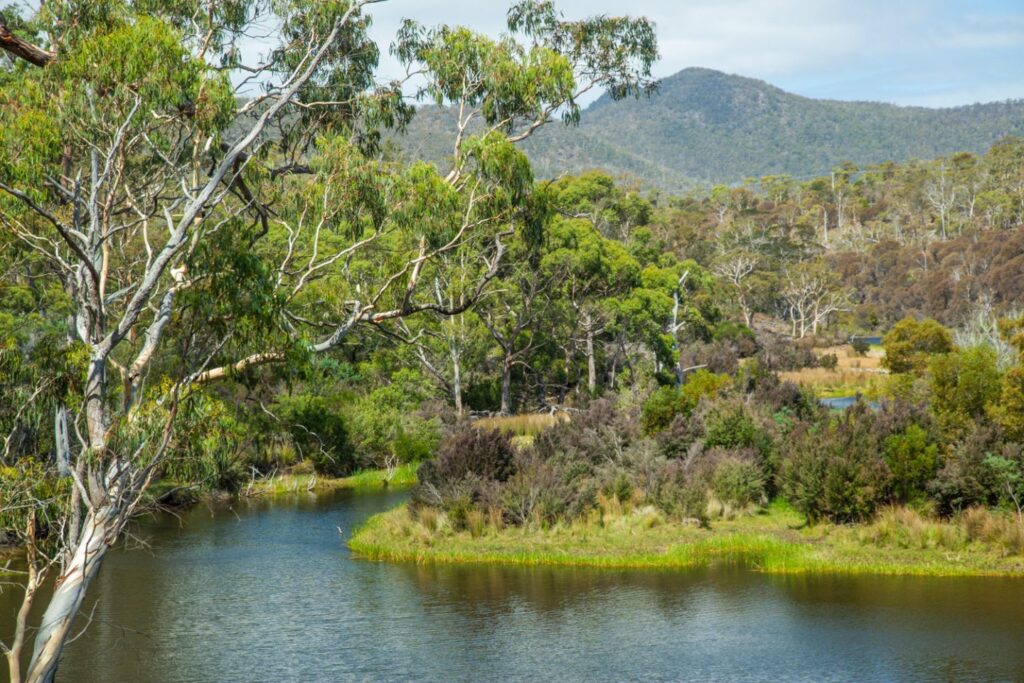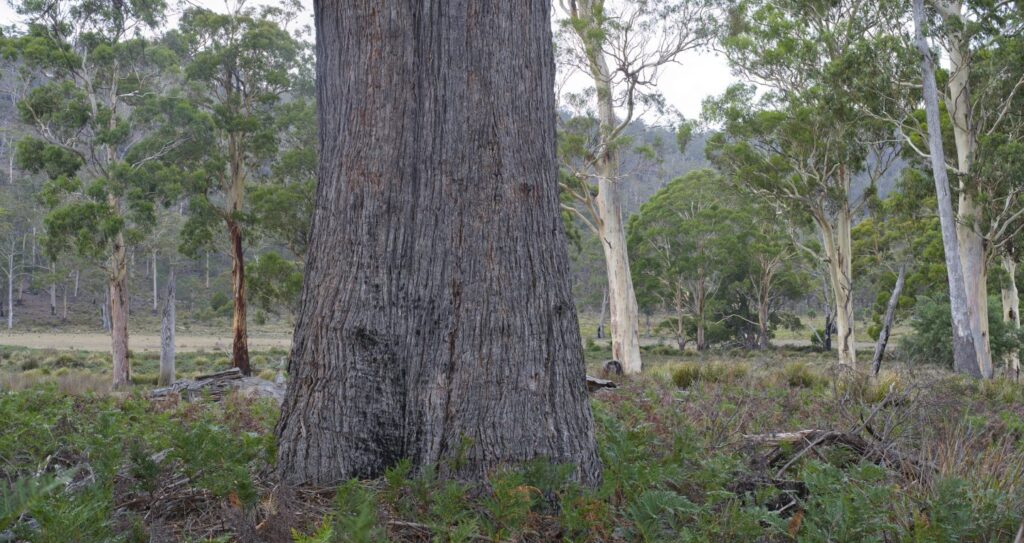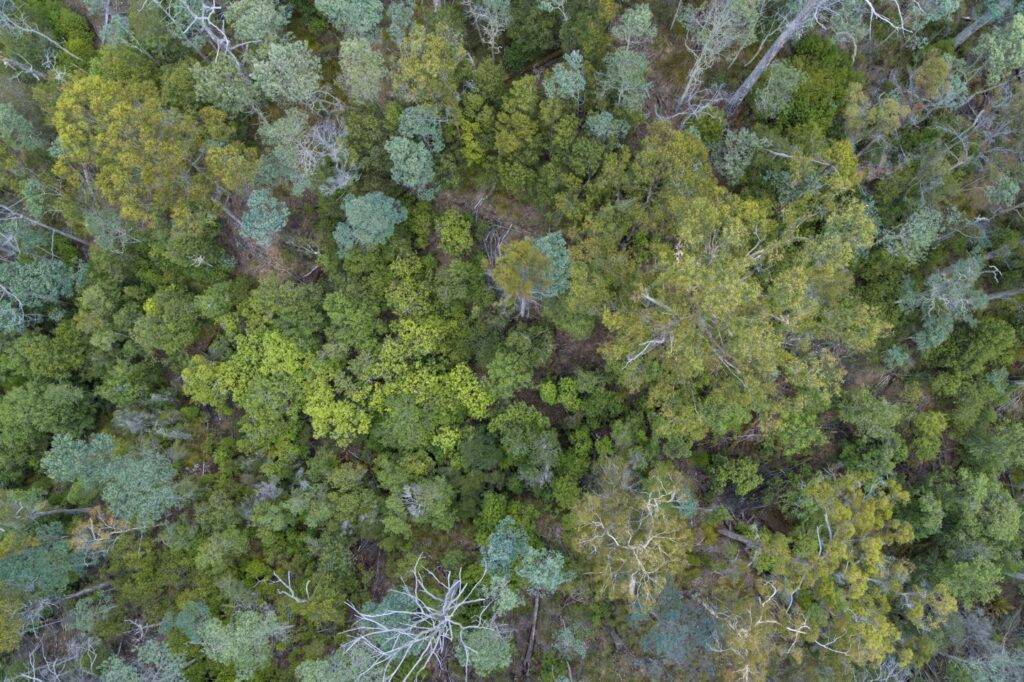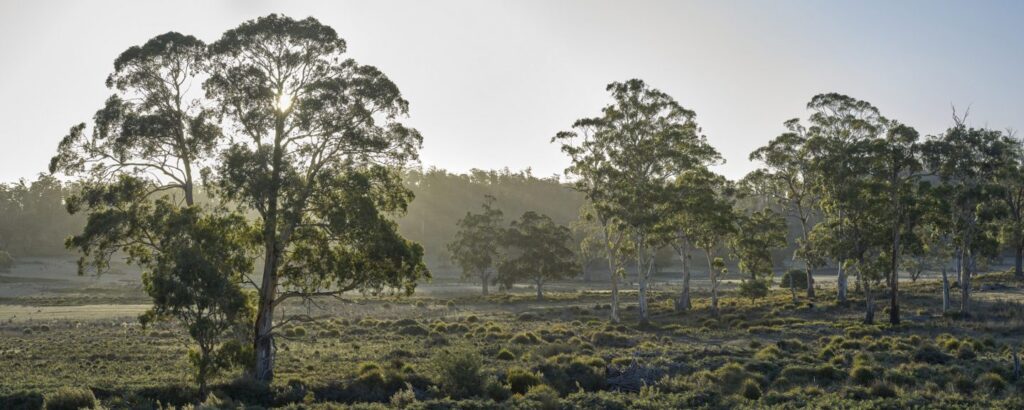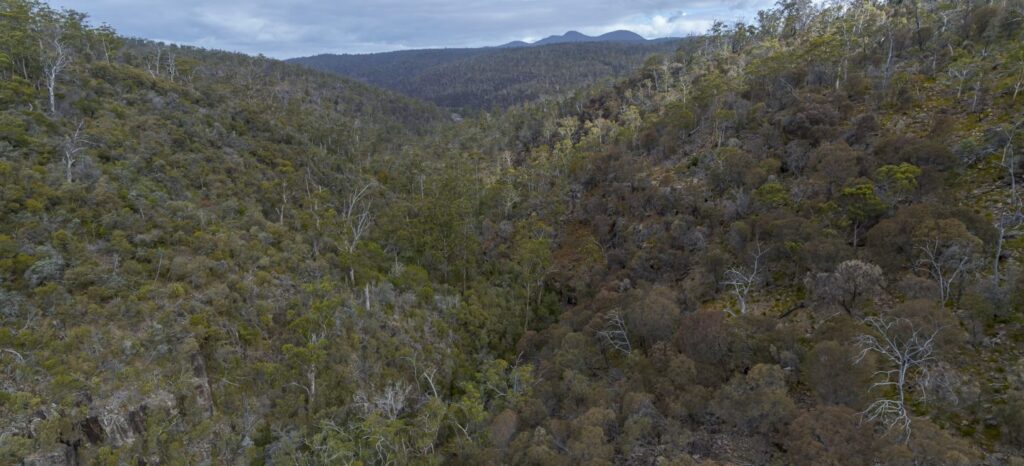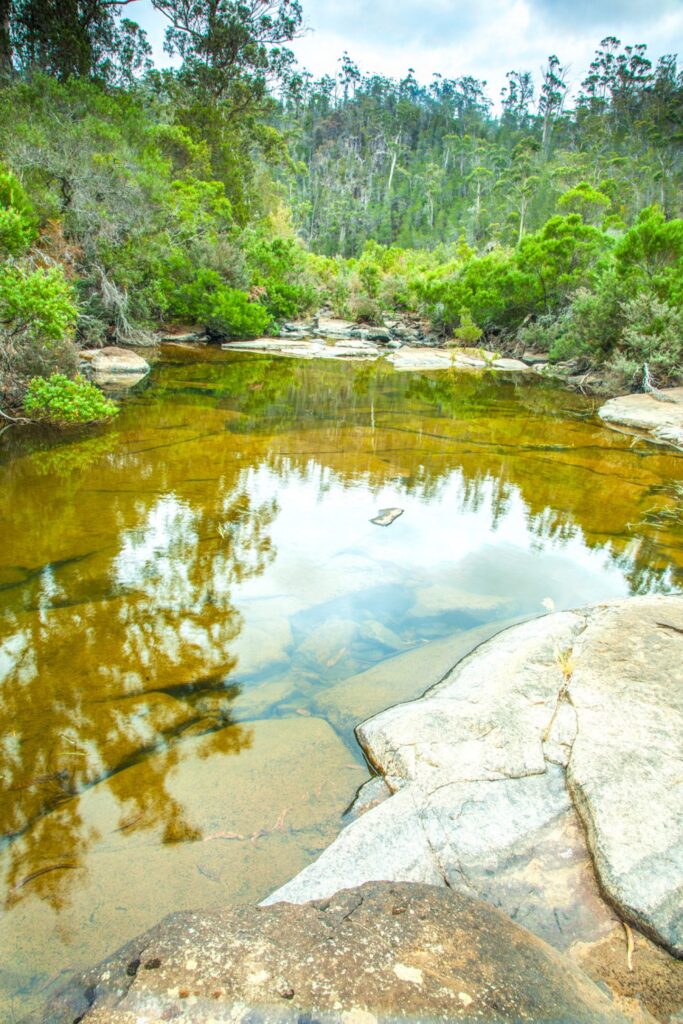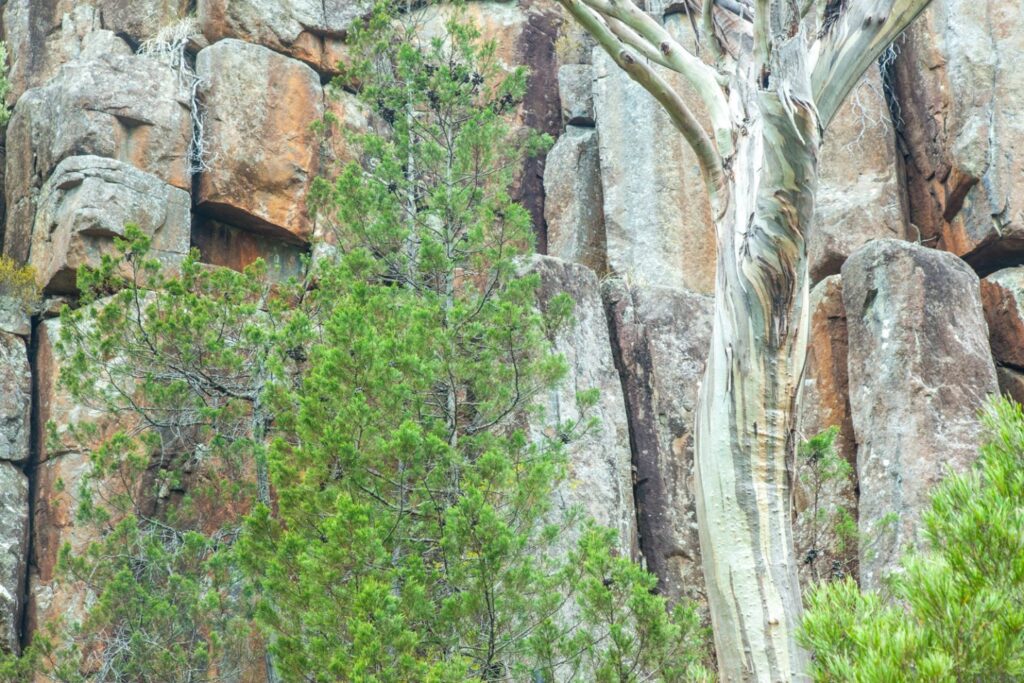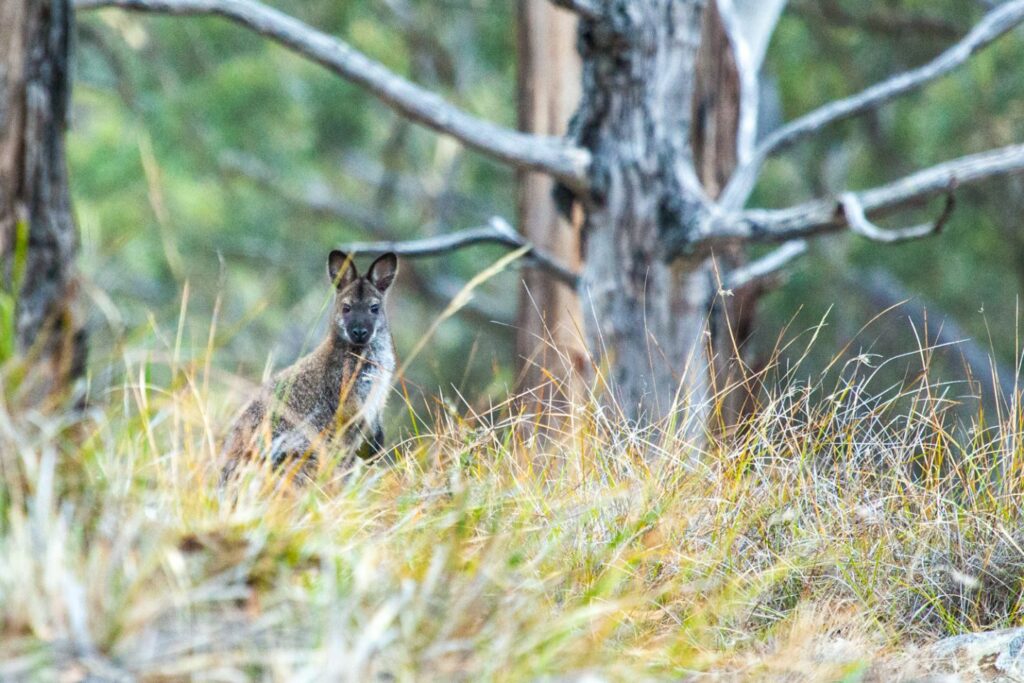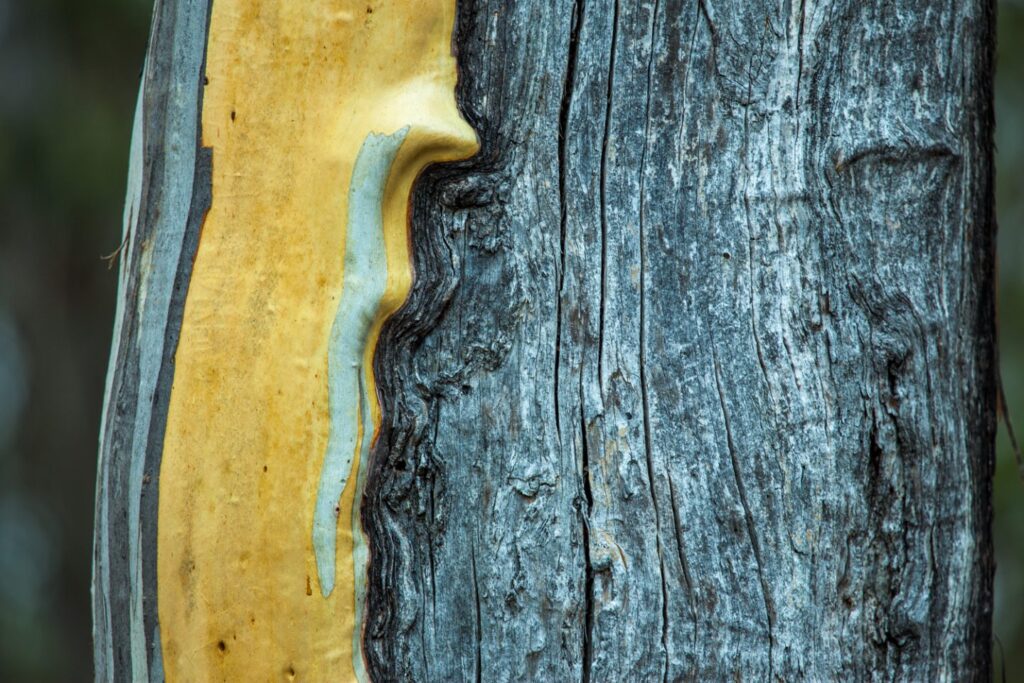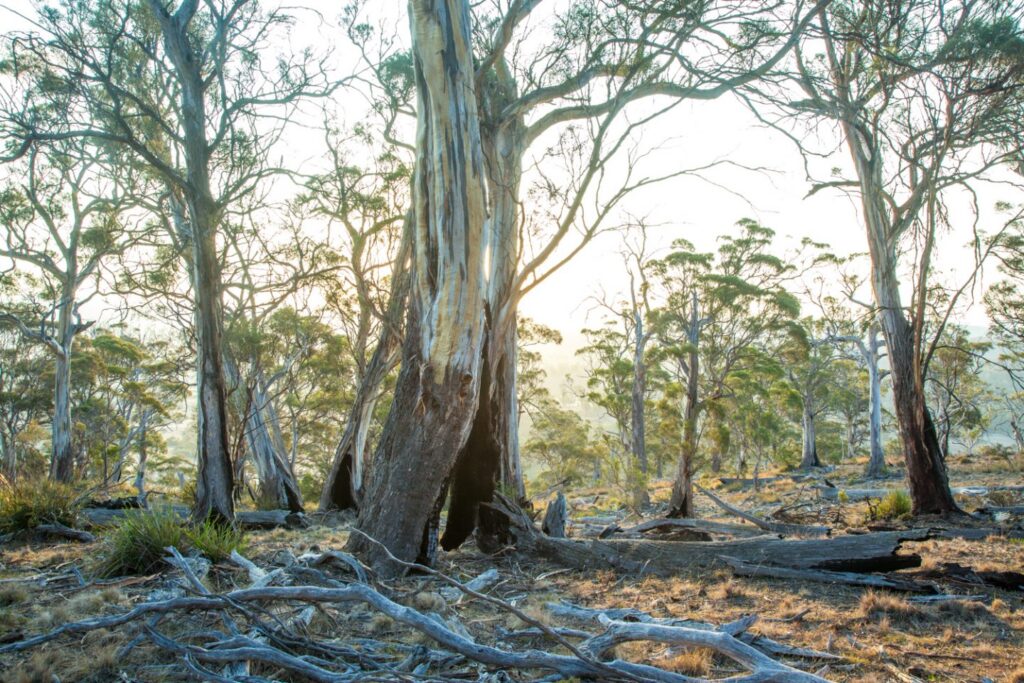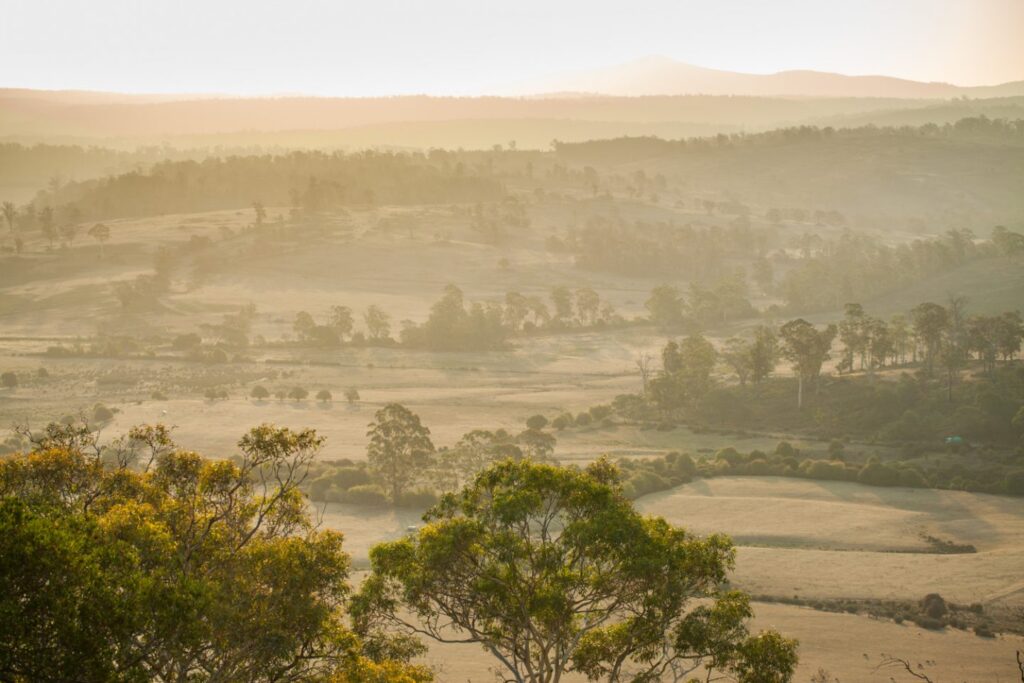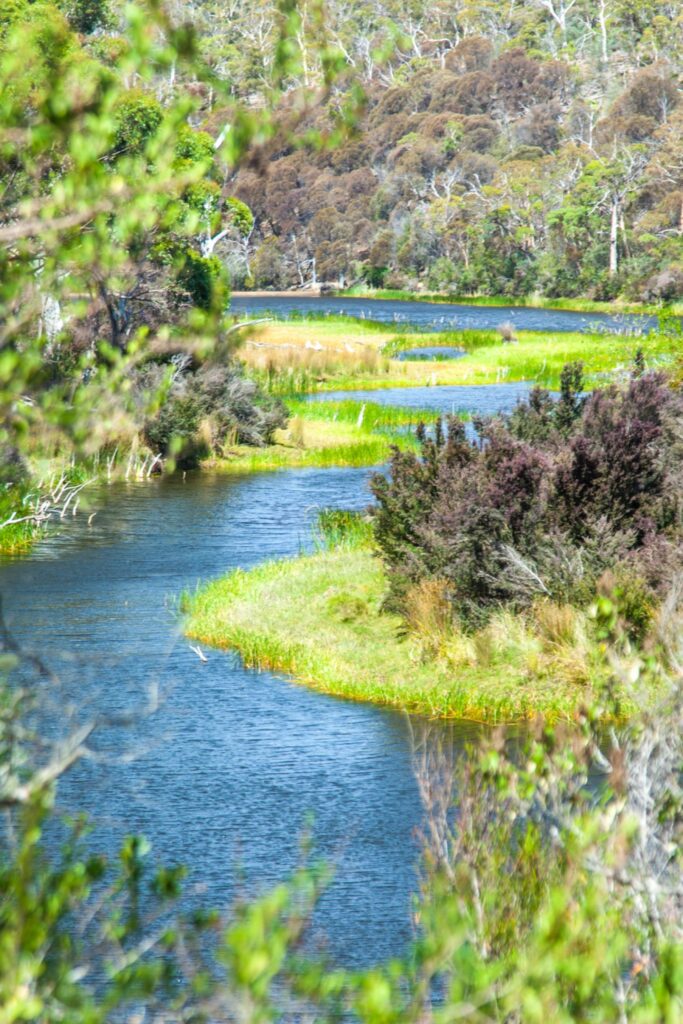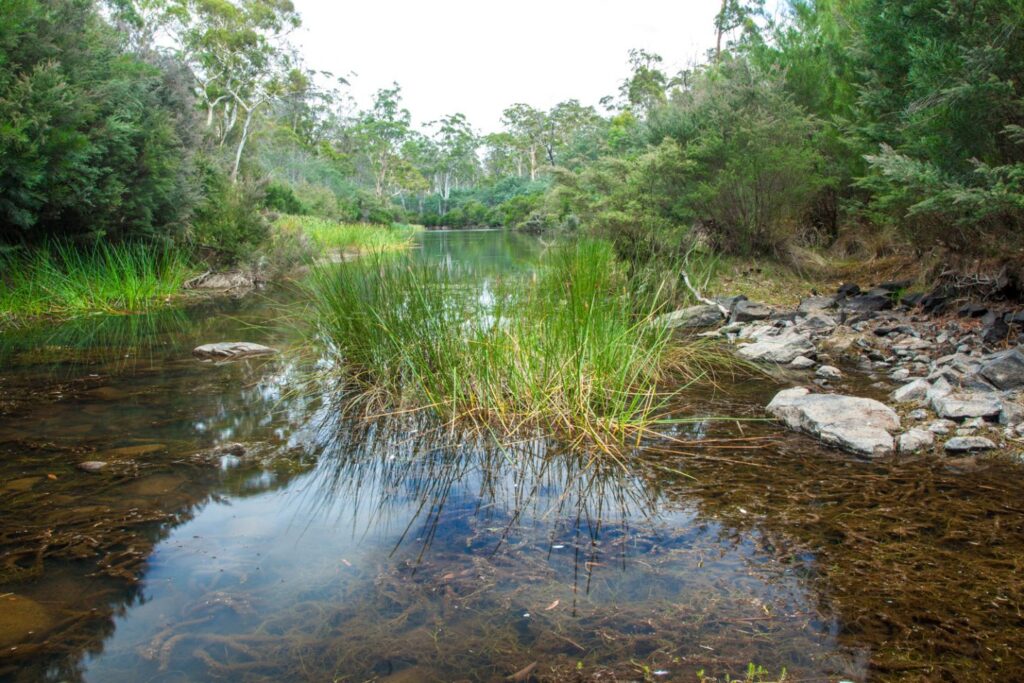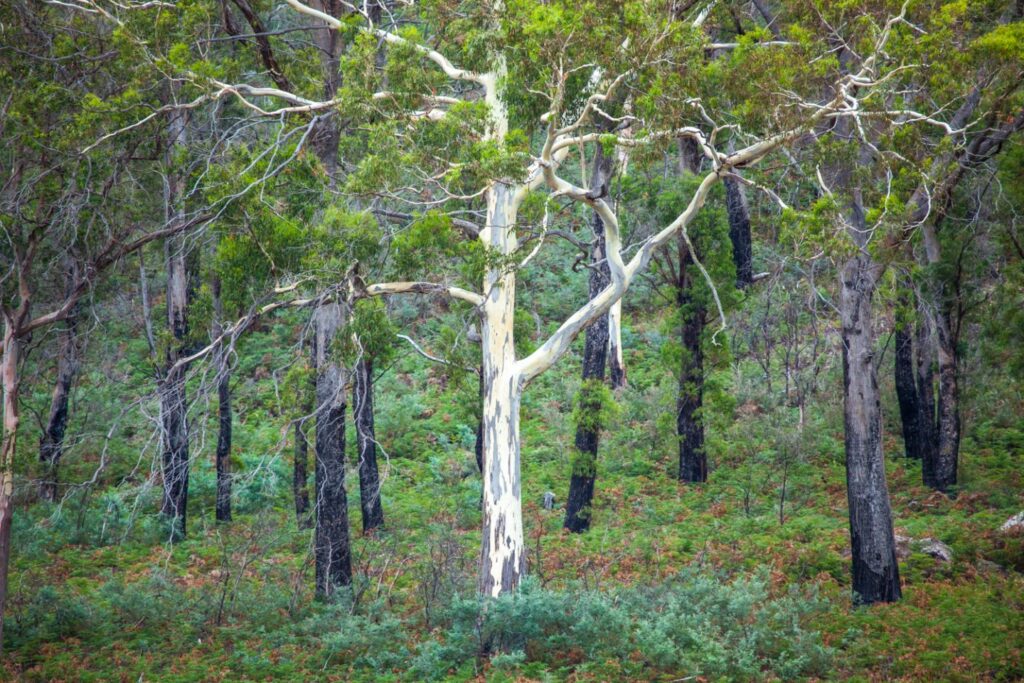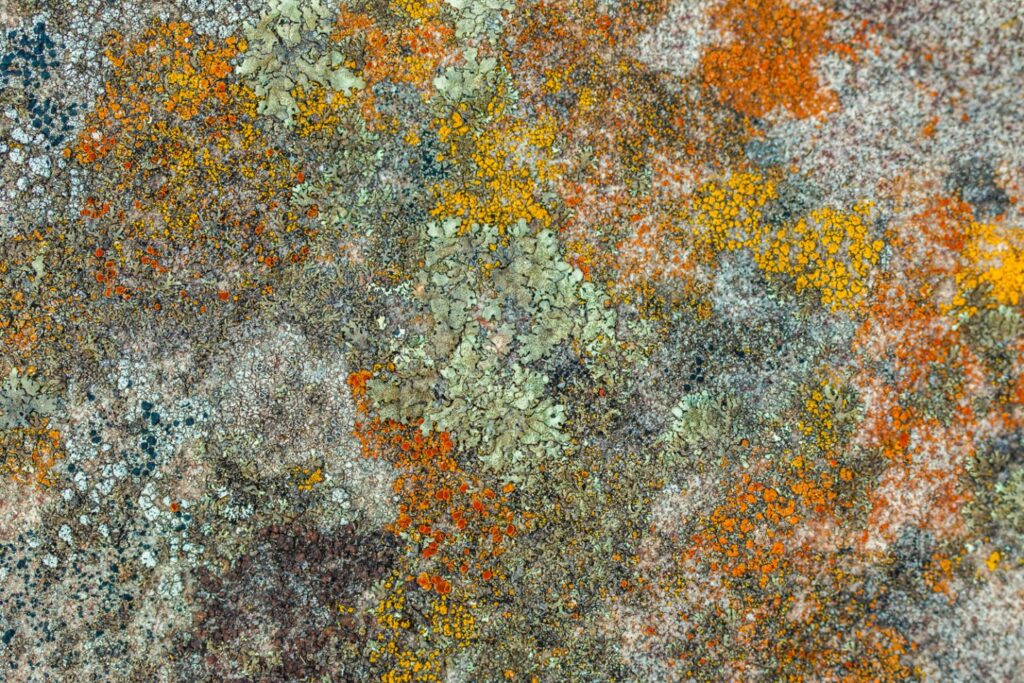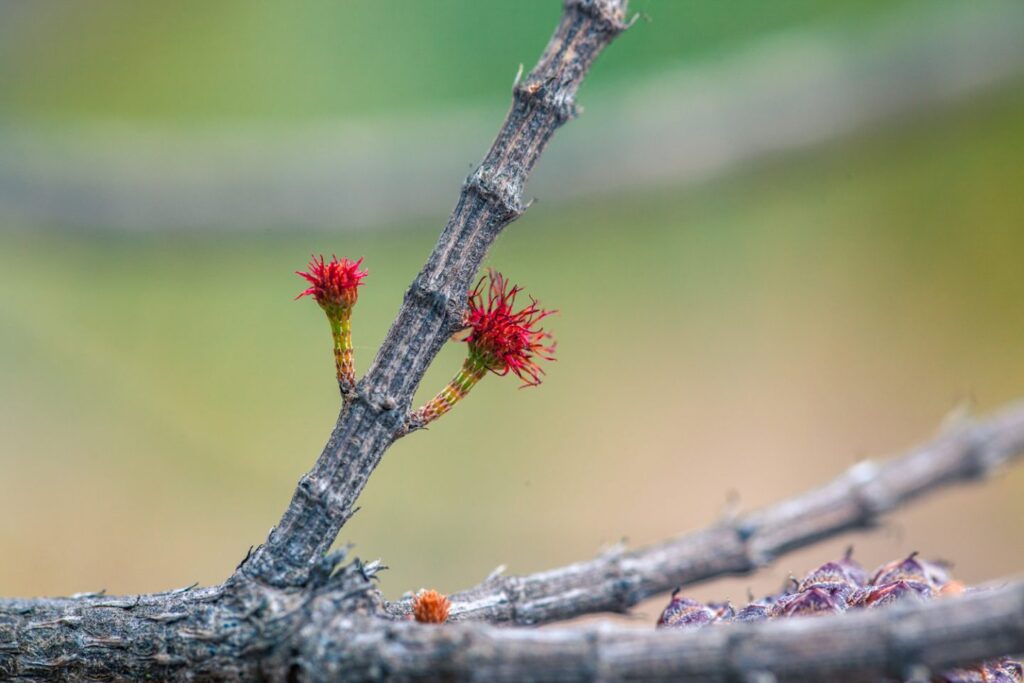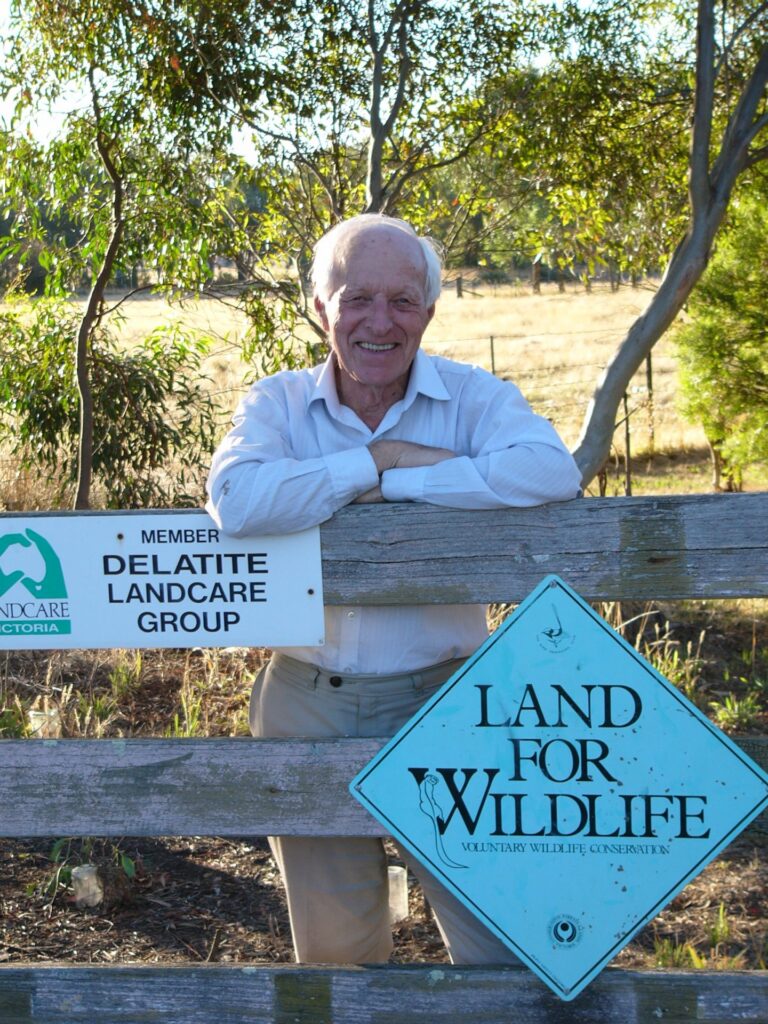Just outside Buckland on the way to Tasmania’s east coast, the Prosser and Back Rivers cut their way through a valley of grassy woodland. This 1,534ha reserve will protect threatened vegetation communities and 11 threatened plant and animal species, as well as old-growth vegetation communities and freshwater ecosystems. This property has been protected thanks to a very generous bequest from the estate of David McGregor.
NATURAL VALUES AND CONTEXT
The diverse geology and varied terrain of this property have resulted in exceptionally diverse vegetation, with 14 communities mapped across the property. Six of these communities are listed as threatened under the Tasmanian environmental legislation and black gum (Eucalyptus ovata) woodland is also listed as critically endangered under federal legislation. While some areas of the property have been selectively logged, there remains at least 500 hectares of old-growth and undisturbed forest, which provides outstanding shelter and nesting habitat for a wide range of native fauna.
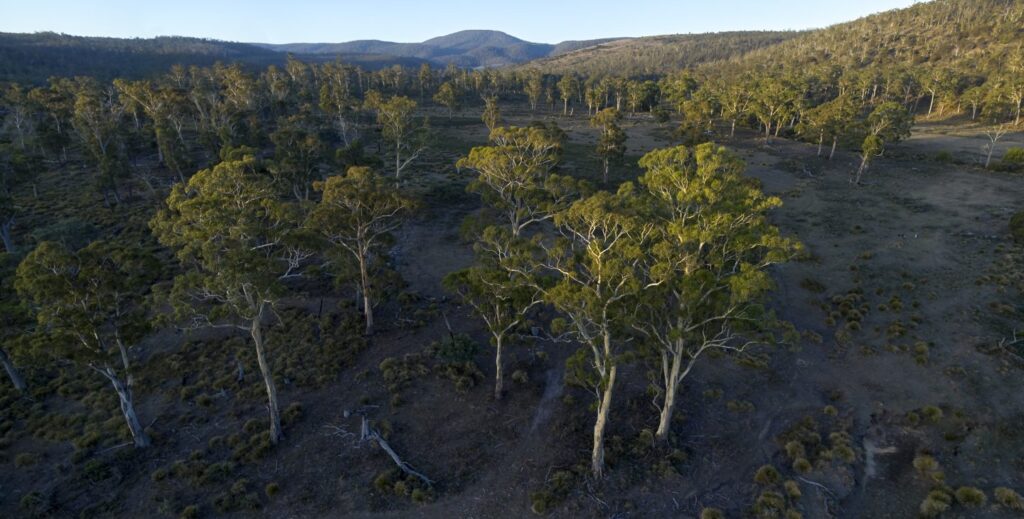
Along the Prosser’s banks, old-growth blue gum (Eucalyptus globulus) is a haven for the critically endangered swift parrots (Lathamus discolor) that nest and feed here. The valley is scattered with critically endangered black gum and the 12km of river frontage is a hotspot for threatened flora, as well as being breathtakingly beautiful.
Deep gullies and gorges are lined with Oyster Bay pine (Callitris rhomboidea) and to the north, an escarpment rises above the woodland where old-growth forest towers over the property. Some of the trees on this ridge are hundreds of years old.
The extensive grassy woodlands of this reserve are highly productive ecosystems and provide excellent habitat for a wide range of native animal species. This includes threatened and iconic species such as the Tasmanian devil (Sarcophilus harrisii), eastern quoll (Dasyurus viverrinus), spotted-tailed quoll (Dasyurus maculatus) and eastern barred bandicoot (Perameles gunnii). Tall old-growth forests occupy steep south facing slopes and gullies and provide nesting habitat for the wedge-tailed eagle (Aquila audax fleayi). Two adults and a fledgling were regularly observed during the course of survey work and three nests were located in south-facing gullies in old-growth blue gum forest.
The property is also home to clubmoss everlasting (Ozothamnus lycopodioides), forest germander (Teucrium corymbosum) and a new population of Barber’s gum (Eucalyptus barberi); masked owl (Tyto novaehollandiae castanops), grey goshawk (Accipiter novaehollandiae), white-bellied sea eagle (Haliaeetus leucogaster) and Wielangta stag beetle (Lissotes latidens).
As TLC Conservation Ecologist, Matt Taylor, said after visiting this property for the first time, ‘The scale and quality of this property is incredible! Working as an ecologist, finding a property that has this many amazing features is a dream. But then to top it all off there is this hidden valley along the Back River, which takes you back in time to pre-European days. So much of our valley ecosystems have been lost but here, remarkably, there is this beautiful intact river flat with big old trees, perfect to stretch your swag under.
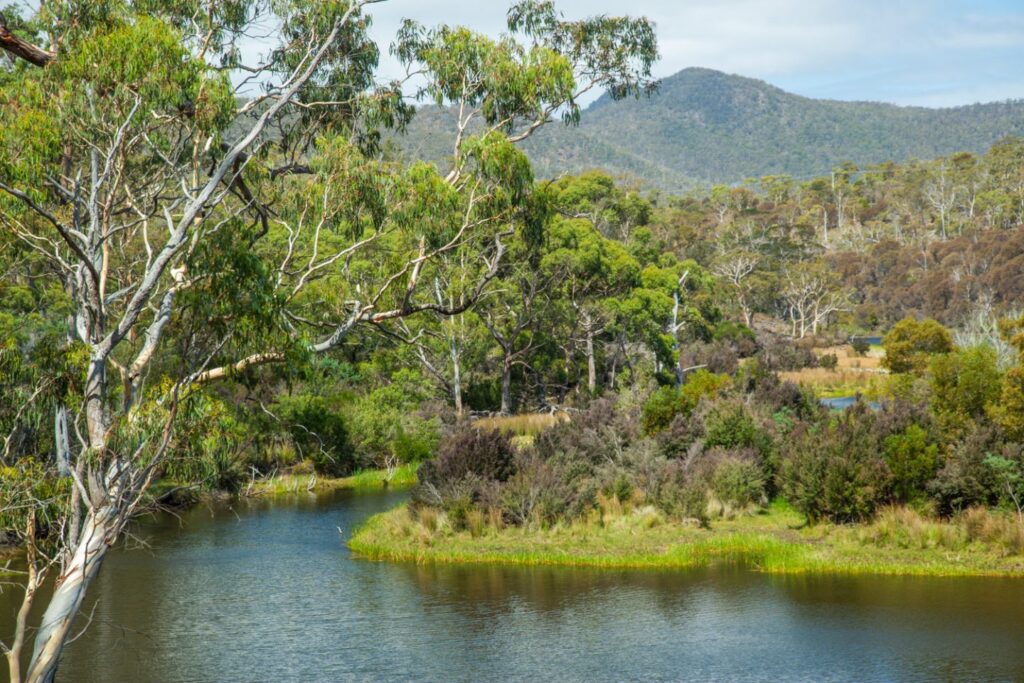
A PERMANENT LEGACY
In June 2019, long-time TLC supporters Bruce and Ann McGregor explained to TLC staff that they were looking for land to protect. Bruce’s father had died and left most of his estate (acquired with his late wife Jean) to be devoted to securing and maintaining a parcel of land with high conservation values for the protection of endangered wildlife and their habitat.
In December, the McGregors accompanied TLC staff to visit some priority properties for conservation, selected using the TLC’s world class reserve system. This decision support tool uses various indicators, including known species, habitat, connectivity in the landscape and threats to ecological values, to direct our conservation efforts.This was their preferred property, so the McGregors committed to protect the area, underpinned by David’s bequest.
Bruce says, ‘Both Mum and Dad loved camping in the bush and wanted to retire to a place where they could see the mountains and the sea. For decades Dad spent a lot of his spare time growing threatened plant species and planting them in his garden, around their farm and along waterways. He loved the small native plants, native birds and restoring gurgling creeks. This property not only helps TLC’s vision but also reflects Jean and David’s values.
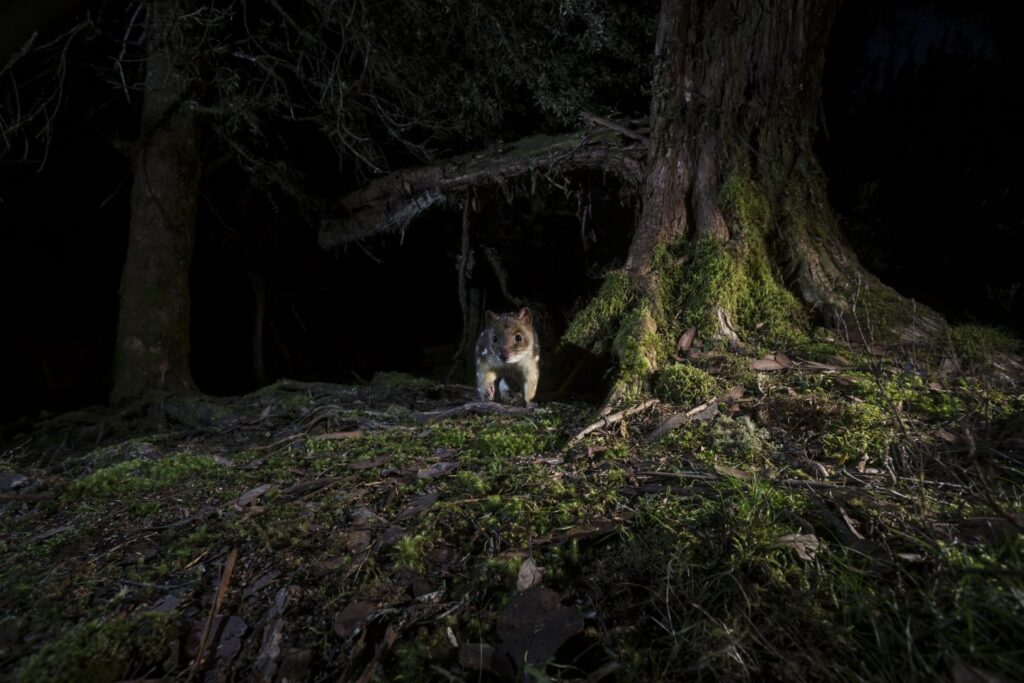
CULTURAL HERITAGE
As outlined in Sharnie Read’s (nee Everett) Prosser Catchment Aboriginal Heritage Management Plan 2014, the property is also a site of significant cultural heritage. This area was the home of the Payintaymirimina band of the Oyster Bay tribe. A road used by the band ran along the banks of liyamangina minanya (the Prosser River) and was known as makuminya. After colonisation, parts of that road were repurposed, laid with blue stone bricks by convicts and later known as the ‘old convict road’.
Because this property carries so many layers of human history and conservation significance, we are consulting widely on what to call the reserve.
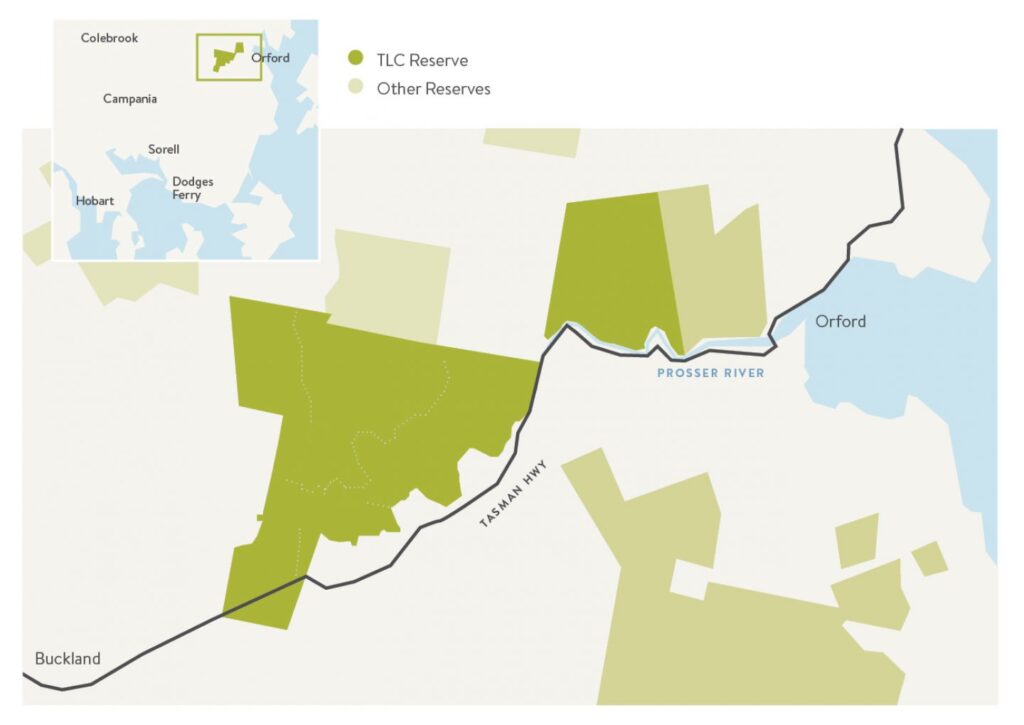
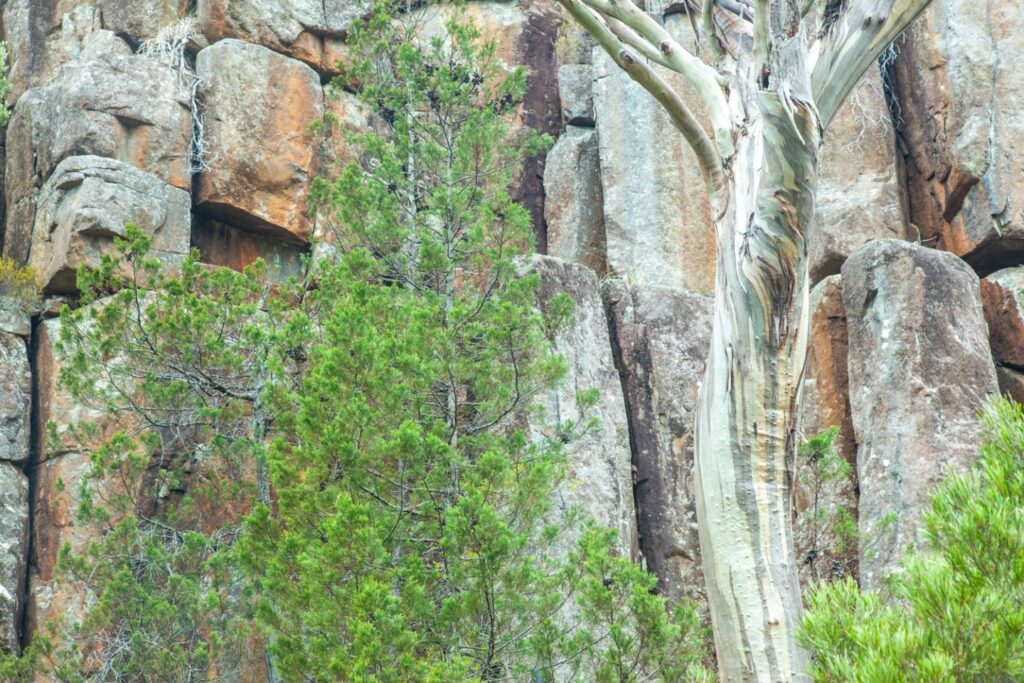
MANAGING THE RESERVE
The management of this reserve will initially involve a more detailed assessment of the flora and fauna, habitat condition and threats, which will contribute to a considered monitoring and adaptive management program to be implemented in 2021.
Our initial inventory of the biodiversity and threats will have a particular emphasis on threatened mammals and birds and their habitat, the distribution and condition of threatened vegetation communities and plants, and the extent of transformer weeds. Gorse is of particular concern at the reserve as there are extensive thickets on adjacent properties that extend into the margins of native vegetation. Control of this species will require structural replacement with native shrub species so as not to adversely affect mammals that often use these thickets as critical shelter.
TLC will implement our Ecological Monitoring Program to collect data on recovery of the vegetation after the shift from a pastoral property to a conservation reserve. This will include the establishment of control sites to measure how rapidly the native species recover after relaxation from grazing, and whether more intensive intervention is needed. Working with our neighbours and the wider community will be key to effective long term sustainable conservation outcomes.
A BioBlitz and inventory will occur in late 2020 / early 2021 to help inform our management decisions and contribute to our planning, including approaches to fire management. Given the size of the reserve, the blue gum forests and frontage on the Prosser River, TLC will also focus on establishing reserve-wide bird monitoring and surveys for small native mammals (including rodents and small dasyurids, or carnivorous marsupials) a component of the Tasmanian fauna that is often overlooked. Collecting comprehensive data on this magnificent reserve is the first step in undertaking careful planning of future work and adaptive management, and to ensure the long-term security and conservation of the natural values of this beautiful property.
Banner photo: Andy Townsend.
